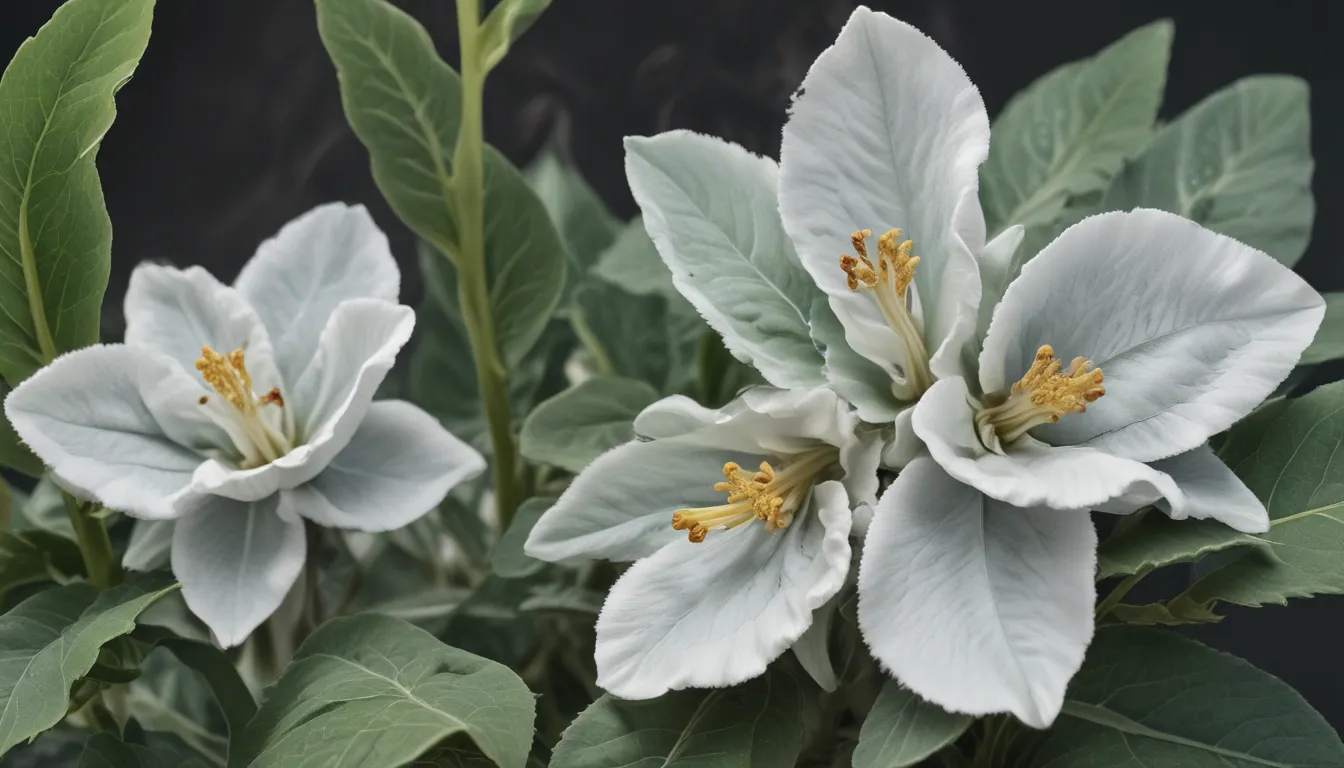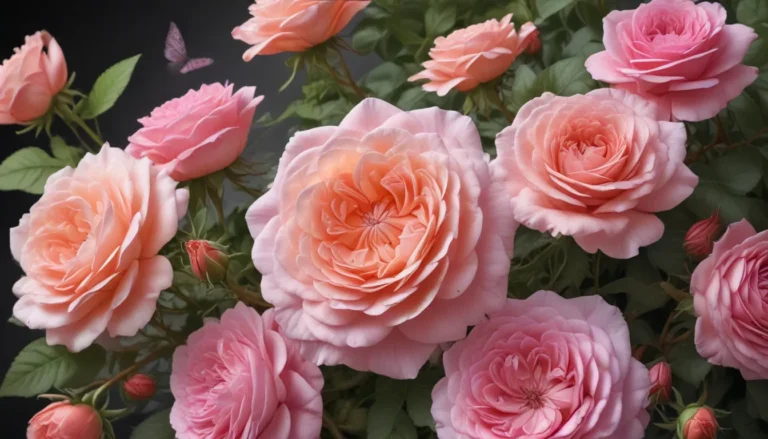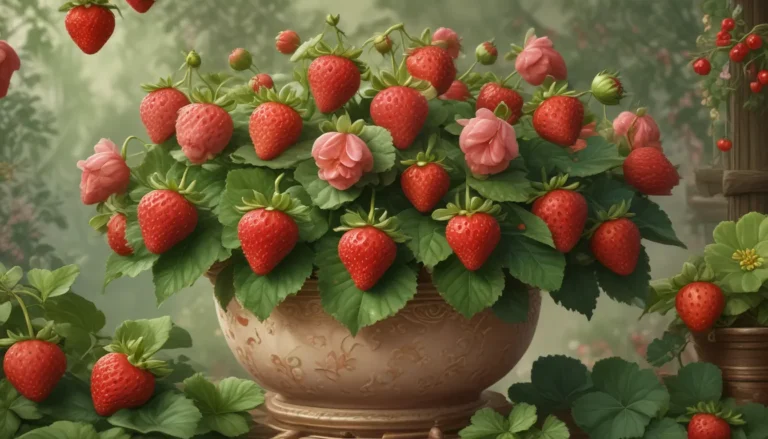The pictures we use in our articles might not show exactly what the words say. We choose these pictures to make you interested in reading more. The pictures work together with the words but don’t take their place. The words still tell you the important facts.
Lamb's ear, scientifically known as Stachys byzantina, is a plant that captivates with its soft, velvety leaves and unique appearance. Originating from the Mediterranean region, this perennial plant has been prized for centuries for both its beauty and medicinal properties. Join us on a journey to uncover 14 intriguing facts about lamb's ear that will leave you amazed and eager to delve deeper into the world of this remarkable plant.
Exploring the Beauty and Benefits of Lamb’s Ear
- Versatile and Low-Maintenance: Lamb's ear is a plant that offers more than just aesthetics. It is a versatile and low-maintenance option that can be used for medicinal purposes, attract beneficial insects, and even be incorporated into culinary delights.
- Drought Tolerance and Resilience: With its ability to thrive in dry conditions, lamb's ear is an excellent choice for gardens in arid regions. The tiny hairs covering its leaves help it retain moisture, making it a resilient and easy-to-care-for plant.
- Historical Medicinal Uses: Beyond its ornamental value, lamb's ear has a rich history of medicinal uses. Its leaves contain compounds known for their antiseptic and anti-inflammatory properties, making them valuable in treating minor skin irritations.
The Story Behind the Name
Lamb's ear derives its name from the soft and fuzzy texture of its leaves, which resemble the ears of a lamb. This unique characteristic sets it apart from other plants in the garden and adds a touch of whimsy to its appearance.
Nature’s Resilient Wonder
- Drought Tolerant Champion: Lamb's ear is well-known for its ability to withstand dry conditions, making it an ideal choice for gardens in arid regions. Its leaves, covered with tiny hairs, help the plant retain moisture and survive in challenging environments.
- Natural Repellent Properties: The fuzzy leaves of lamb's ear are unappealing to deer, making it a natural deterrent for these animals. This quality makes it a valuable addition to gardens where deer may pose a threat to plants.
Delving Into the Medicinal Realm
- Historical Significance: Lamb's ear has a long history of use in traditional medicine, dating back to ancient civilizations. It has been mentioned in herbal remedies by renowned herbalists, showcasing its cultural and medicinal significance.
- Antibacterial Properties: Studies have shown that the leaves of lamb's ear possess antibacterial properties, which can help inhibit the growth of bacteria and reduce the risk of infection in minor wounds.
Embracing Nature’s Bounty
- Edible Delights: Surprisingly, lamb's ear leaves are not just beautiful but also edible. With a mild flavor, they can be added to salads or used as a lettuce substitute in various dishes, adding a unique culinary twist to your meals.
Cultivating Beauty and Diversity
- Easy Propagation: One of the advantages of lamb's ear is its ease of propagation. It can be divided and replanted to create new plants, making it a cost-effective option for gardeners looking to expand their collection.
- Variety in Colors and Growth Habits: While the common variety of lamb's ear is Stachys byzantina, there are several other varieties available. These variations offer a range of choices in colors, leaf shapes, and growth habits, allowing for creative and diverse garden designs.
- Groundcover Excellence: Due to its ability to spread and fill in space, lamb's ear is often used as a groundcover. Its dense foliage helps suppress weed growth and adds an attractive texture to gardens and borders.
Embracing Lamb’s Ear in Your Garden
- Attracting Bees and Butterflies: The vibrant flower spikes of lamb's ear attract bees and butterflies, making it a valuable addition to pollinator gardens. These nectar-rich flowers provide food for beneficial insects, contributing to the biodiversity of the ecosystem.
- Versatility and Resilience: Whether you're seeking a plant for your flower bed, a groundcover, or a medicinal herb, lamb's ear fits the bill. Its versatility makes it a popular choice among gardeners with different preferences and gardening styles.
- Easy Growing: Lamb's ear is incredibly easy to grow, thriving in well-draining soil and preferring full sun but tolerating partial shade. Even novice gardeners will find success in nurturing this resilient plant.
Nurturing Lamb’s Ear with Care
- Minimal Water Needs: Lamb's ear is a resilient plant that can tolerate dry periods. It is best to water it sparingly and ensure that the soil is well-drained to prevent overwatering, which can lead to root rot.
- Indoor Growing: Lamb's ear can thrive indoors as long as it receives adequate sunlight and is planted in well-draining soil. It can make a beautiful addition to your indoor plant collection, bringing a touch of nature indoors.
Unveiling the Natural Marvel of Lamb’s Ear
Discover the wonders of lamb's ear, a plant that offers not only beauty but also practical benefits for your garden and beyond. From its historical significance to its antibacterial properties, there is much to marvel at in this unique plant. Explore the diverse uses of lamb's ear and embrace its versatility in your gardening endeavors.
Frequently Asked Questions
Q: Is lamb's ear difficult to grow?
A: Not at all! Lamb's ear is a drought-tolerant plant that can adapt to various soil types, requiring minimal maintenance and generally resisting pests and diseases.
Q: Can I use lamb's ear for medicinal purposes?
A: Yes, lamb's ear has been traditionally used for its medicinal properties, such as relieving minor skin irritations, soothing burns, and alleviating certain respiratory conditions.
Q: How often should I water lamb's ear?
A: Lamb's ear is a resilient plant that can tolerate dry periods. It is best to water it sparingly and ensure well-drained soil to prevent overwatering.
Q: Does lamb's ear attract bees and butterflies?
A: Yes, lamb's ear is known to attract bees and butterflies with its nectar-rich flowers, supporting pollinators and enhancing the biodiversity of your garden.
Embark on a journey of exploration and discovery with lamb's ear, a plant that offers a world of wonder and practical benefits for your garden and home. With its unique characteristics and versatile uses, lamb's ear is a fascinating addition to any landscape. Dive into the captivating world of lamb's ear and unleash the beauty and potential of this remarkable plant.






